Introduction
2022 marked the 60th anniversary of the ICRC’s presence in Yemen. At the outbreak of the North Yemen Civil War in 1962, the delegates starting their work in the region would probably never have imagined the conflict would last eight years. Neither could they anticipate that they were inaugurating activities that would continue for six decades.
The history of the ICRC’s presence in Yemen encompasses the full spectrum of activities carried out by the organization: protection, assistance, dissemination and promotion of international humanitarian law (IHL), cooperation with the Yemeni Red Crescent, dialogue with numerous stakeholders. This is a history full of successes, failures, danger, joy, but also a lot of suffering. It would deserve more space than a blog post.
This paper only proposes a general historical overview. Nevertheless, it shows the ICRC’s commitment to Yemen, and the diversity of activities carried out for its population over the past 60 years.
North Yemen civil War (1962-1970)
The North Yemen Civil War started following the death of Imam Ahmed El Badr of the Mutawakkilite Kingdom in September 1962 and the rebellion of some officers who proclaimed a republic – the Yemen Arab Republic – a few days later. The Imam’s son, Mohamed El Badr, and royal forces took refuge in the Yemeni mountains while the Yemen Arab Republic kept the main cities.
In November 1962, the delegate of Imam El Badr in New York requested the ICRC’s assistance. Following talks with both parties, the ICRC announced that two delegates would visit prisoners of war in Yemen and Saudi Arabia, even though none had signed the 1949 Geneva Conventions. However, both parties promised to respect the provisions of the Conventions.
The ICRC also set up a field hospital in October 1963 that became fully operational in December, with the support of the Swiss, British, French and German Red Cross National societies. It took care of wounded combatants but also of civilians who were seeking primary medical care. A small “colony” was even created around the hospital. However, its remote location made it a logistical nightmare. The “clinobox” used in the hospital was handed over to royalist officials in February 1966.
The ICRC delegates could visit Egyptian and Republican detainees in royalist hands. To access them, they had to navigate in a hostile environment – mountains, moving frontlines, landmines, etc. They helped them reconnect with their families. The ICRC also had access to royalist detainees in Republican or Egyptian hands. In March 1964, the ICRC visited members of the royal family interned in houses in Cairo.
Under the auspices of the ICRC, parties to the conflict met in Uqd hospital to negotiate the release and repatriation of detainees. As a result, repatriations started on 16 August 1965 and continued until October.
In 1966, the ICRC sent four medical teams close to the frontlines. On the Republican side, the ICRC sent food and clothes to Sanaa. In December 1967, it moved its medical mission closer to Sanaa, in an area still in royalist hands. On 8 January 1969, the ICRC withdrew its last surgical team, replacing them with three nurses.
In April 1968, the ICRC could deploy surgeons sent by National Societies from Central Europe in Sanaa. It also opened a prosthetic center in August 1970. Eventually, an ICRC surgical team worked in Saada from 6 January to 14 February 1970 until it had to leave because of insecurity and lack of supply. In Sanaa, delegates continued detention visits and distribution of assistance to people in need.
The use of chemical weapons marked the conflict. On 5 January 1967, an air bombing on the village of Ketaf killed more than 120 people. Two ICRC doctors arrived on 7 January and found indications of the use of chemical weapons. On 30 January, the ICRC publicly condemned the attacks against the civilian population and the use of chemical weapons.
Another bombing took place on 12 May 1967, killing 75 civilians in Gahar. The head of delegation and five other delegates, including two doctors and a nurse, were heading toward the village when they were bombed. Fortunately, they escaped the attack and finally reached the village. On 2 June 1967, the ICRC submitted a report to the parties to the conflict and issued a press release denouncing the use of chemical weapons.
The ICRC’s action in Yemen remained its most extensive operations in the Middle East until the outbreak of the Six-Day War in 1967.
From the first Yemen War to the reunification (1972-1990)
In March 1972, the ICRC closed its delegation in the Yemen Arab Republic and handed over responsibility for running its rehabilitation center to the government in Sanaa. At that time, the People’s Democratic Republic of Yemen (South Yemen) and the Yemen Arab Republic (North Yemen) were discussing unification. However, fighting resumed in September 1972 until an agreement was signed in Cairo on 28 October.
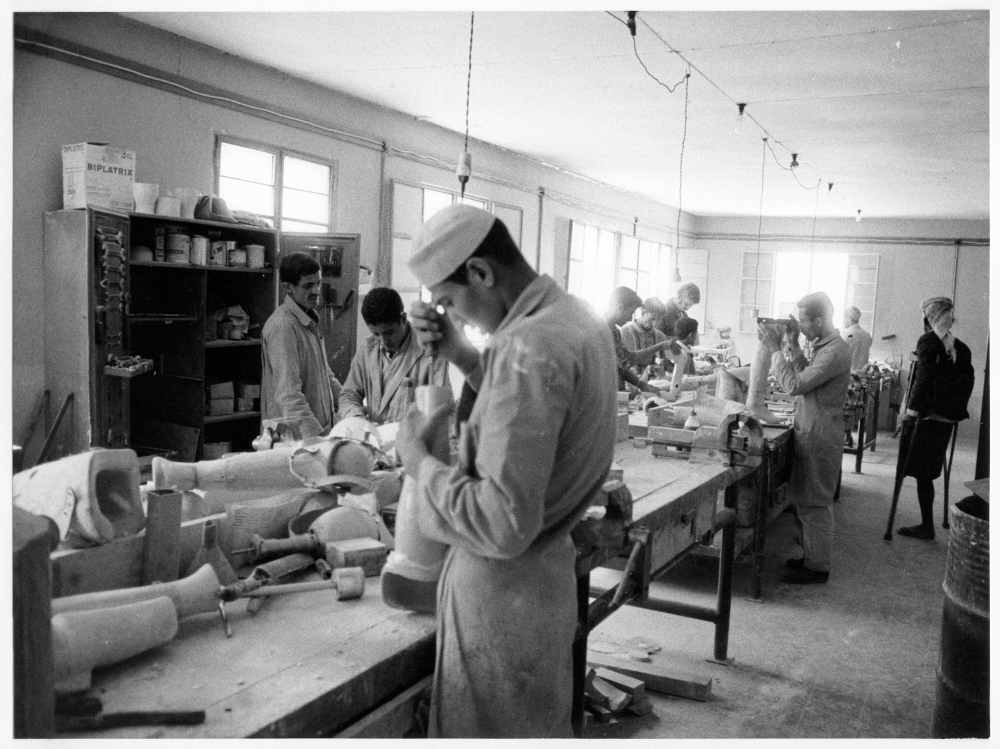
Sana’a, atelier de prothèses installé par le CICR. Fabrication de prothèses pour les invalides de guerre., 1971. ©ICRC/BERTRAND Martin, V-P-YE-E-00474
An ICRC delegate had arrived in the region a few days earlier. He could visit detainees in relation to the conflict and political detainees in 3 prisons in Sanaa. The ICRC also sent 1 ton of medical supplies to Taiz during the second half of October. From 6 to 18 November, a doctor-delegate surveyed the local hospital and medical infrastructure.
On the other side, a delegate in Aden offered the ICRC’s assistance. In early November 1972, he was authorized to visit soldiers from the Yemen Arab Republic interned in Aden military camp. Detention visits continued until 1976 in the People’s Democratic Republic of Yemen and 1977 in the Yemen Arab Republic.
The second Yemenite war took place in February and March 1979. The Arab League intervened to stop the war, and both heads of state reaffirmed their will for unity in March 1979.
At the outbreak of the hostilities, civilians sought refuge in the central area of the Yemen Arab Republic. Therefore, the Red Crescent Society of the Yemen Arab Republic launched an appeal for assistance. The ICRC sent a delegate to assess the needs and liaise with the authorities. An ad hoc appeal for funds launched by the ICRC on 19 March led to assistance activities for 45,000 internally displaced people (IDPs), including many women and children. The ICRC tried to visit the People’s Democratic Republic of Yemen without results.
During the 80s, the regional delegate traveled several times to the Yemen Arab Republic, where he visited numerous places of detention and camps for IDPs, sometimes providing them with assistance. Following an earthquake at the end of 1982, the ICRC donated 900 tents and 1 ton of clothing to the people affected by the disaster.
In 1984, the ICRC president, Alexandre Hay, traveled to the Yemen Arab Republic and attended the 15th Conference of Arab Red Cross and Red Crescent Societies. At the end of 1984, the ICRC was authorized to visit all prisons in the country, including those where security detainees were held. The visits started in 1985.
In February and March 1981, the regional delegate could visit the People’s Democratic Republic of Yemen for the first time since 1976. Moreover, for the first time since 1973, he was granted access to 400 detainees, including seven political prisoners, in 2 places of detention.
On 13 January 1986, a civil war broke out in the People’s Democratic Republic of Yemen. The conflict lasted more than one month and caused thousands of casualties. As a result, around 60’000 people fled to the Yemen Arab Republic.
At the outbreak of the hostilities, the ICRC offered its services to the authorities to provide protection and assistance to the people affected by the conflict. In collaboration with the National Society, the ICRC provided safe water supplies and medical support, including surgical assistance and rehabilitation of war wounded. In addition, it carried out tracing activities to help find missing people. These activities continued until the end of April when the ICRC team left Aden.
From the Reunification of the country to the end of the 20th Century (1990-1999)
On 22 May 1990, both states merged to become the Republic of Yemen. However, competing tribal, regional, religious, and political interests continued to divide the country. In October 1991, the ICRC concluded a headquarters agreement with the Kuwaiti authorities that came into force in February 1992. Since then, the ICRC regional delegation in Kuwait covered Yemen. The ICRC’s detention activities in Yemen continued after the Reunification.
In 1993 and subsequent years, thousands of refugees in Yemen who fled from countries in the Horn of Africa, namely Ethiopians and Somalis, received the ICRC’s support in restoring contact with their relatives.

Aden. Le délégué du CICR visite les détenus d’une prison. 09/11/1994. ©ICRC/BOUVIER Marc, V-P-YE-N-00069-20
Despite the Reunification, tensions continued, and a new conflict broke out from May to July 1994. To fulfill its mandate, the ICRC set up a new delegation in Sanaa and a sub-delegation in Aden. The first delegates arrived on 4 May already. They visited Sanaa and then traveled to Aden, Taiz, and Mukalla. At the end of the conflict, 29 expatriates were working in Yemen, including doctors, surgeons, and sanitary engineers.
The ICRC carried out 24 visits in 18 places of detention. As recalled by a detainee:
“Suddenly, 3 ICRC delegates came into our cell. They spoke with us, asked us about our conditions of detention and even inspected the toilets. Their visit was totally unexpected and we were very grateful to know that someone cared about us.”[1]
Delegates also visited 24 hospitals and provided 35 tons of medical assistance to treat the war-wounded. Assistance was sent from Djibouti to Aden by ship and Sanaa by plane. In addition, the ICRC provided the authorities with spare parts, pumps, and generators to restore the water supply. For several weeks after the fighting ended, the ICRC brought 300,000 liters of water daily by tanker truck until the two main pumping stations were repaired, with the support of the ICRC.
The 1994 conflict was followed by widespread looting in Aden and sporadic clashes between several armed groups in Aden and the Hadramout area. In 1995, the ICRC increased its activities for the civilian population and prevention activities against landmines and unexploded munitions.
At the end of the hostilities, the ICRC visited 6,500 detainees in 40 places and registered 140 new people. In March 1995, delegates were, for the first time, granted access to people held by the Department of Military Justice. As a result, more than 70% of detainees in Yemen benefited from upgraded water supply facilities and wastewater disposal systems. In September 1995, the ICRC launched a project to assist mentally ill detainees in the psychiatric section of Sanaa’s central prison. It was developed in partnership with the authorities, the National Society, and the Dutch Red Cross delegates.
The last two delegates left Sanaa on 18 December 1995 and the country was again covered by the regional delegation in Kuwait.

Nawbat al Masawidah. Délégué CICR au cours d’une évaluation. 06/08/1994. ©ICRC/BOUVIER Marc, V-P-YE-N-00067-01
In December 1995, Yemen and Eritrea fought to control the Greater Hanish island in the Zukur-Hanish archipelago. The fighting lasted only three days, between the 15 and 17 December. The ICRC appealed to the parties for the respect of IHL. It also offered its services as a neutral intermediary. Both parties accepted, and on 30 December, the ICRC was able to repatriate 17 Yemeni civilians and 196 Yemeni prisoners of war taken by the Eritrean armed forces.
The reestablishment of an ICRC delegation and the Houthi rebellion (1999-2014)
In 1999, Yemen was still enduring the consequences of the 1994 conflict, including economic hardship, indiscriminate violence against civilians, kidnappings, and arrests for security reasons. Therefore, the ICRC decided to change the status of its office in Yemen and once again transform it into an operational delegation.
Following a border deal between the government and Saudi Arabia, tensions between the government and the Houthi increased, ultimately leading to a rebellion. In June 2004, the authorities started arresting hundreds of Houthis. Fighting took place until September and the death of Al-Houthi, before resuming from March to June 2005. It resumed in November 2005, until a new ceasefire agreement was reached in June 2007, even though fighting continued in the following years.
In November 1999, for the first time since July 1997, the ICRC visited over 3,000 detainees in the central prisons of Sanaa and Aden. It also continued maintenance work on sanitary installations in Sanaa, Hodeida, Taiz, and Ibb prisons.
Visits continued in the following years. For instance, in February 2001, the ICRC obtained access to interrogation centers and places of provisional detention under the authority of the Prosecutor General’s Office and the Ministry of Interior. In addition, visits started in Sanaa and Aden in July.
The same year, the ICRC worked with the National Society and launched a pilot project to assist women detainees in Al-Mahwit central prison. It included medical care for them and their children, hygiene products, and teaching of skills – literacy and sewing courses – to help them reintegrate into society at the end of their detention. The project was later extended to other places of detention. The assistance program for mentally ill detainees continued until 2003 and was then handed over to the authorities.
In 2001, with ICRC’s support, the Ministry of Health adopted the ICRC’s polypropylene technology for a prosthetic center in Sanaa. In March 2003, the ICRC opened an office in Al Mukalla to support the orthopedic project.
In August 2002, the ICRC was granted access to detainees held by the Political Security Department in Sanaa concerning the “global war on terror”. Moreover, several families of Yemeni detainees in US detention facilities in Afghanistan, Iraq, and Guantanamo asked for ICRC support to reconnect with their relatives. The ICRC started long-term support for them. For example, in 2010, it facilitated 240 calls and four conference calls for the first time.
In 2002, representatives of the Educational Research and Development Center and the Ministry of Education set up a technical committee to deal with the Exploring Humanitarian Law (EHL) program. The program provided resource packs for teachers to introduce the basic rules of IHL to young people aged from 13 to 18. The first training workshop on the EHL program took place in September 2002 and concluded that there was no contradiction between IHL and Islamic sharia law.
Irregular migrants from the Horn of Africa awaiting deportation received assistance – food, nutritional supplements, kitchenware, hygiene items, and medical treatment – from the ICRC and the National Society. In 2007, 100 to 400 people received this assistance. Two hundred people benefited from the ICRC support in 2008, and 250-350 in 2009. In 2010 3,800 irregular migrants in Sanaa and 1,072 in Hodeida and Taiz central prisons received various assistance. There were 1,200 in 2011.
In September 2004, the Yemeni Red Crescent could enter the conflict zone in North Yemen for the first time since the escalation of the conflict. It distributed IDPs relief supplies given by the ICRC to IDPs.
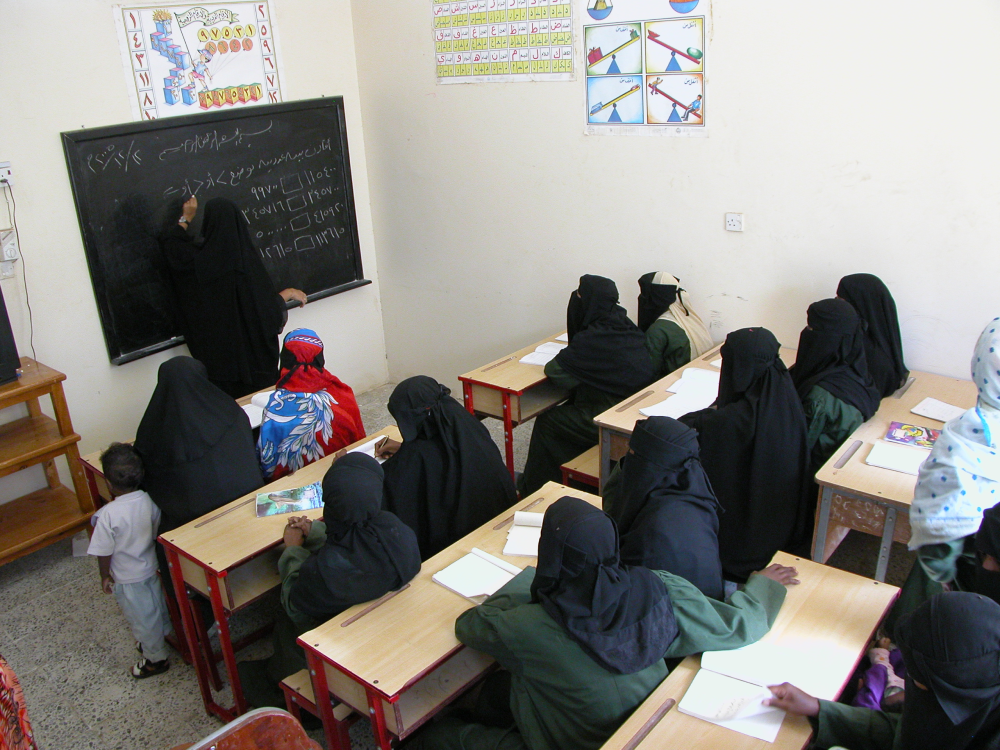
Hodeida, central prison. Women detainees attending to the literacy classes within the Women in Prison project of the Yemeni Red Crescent Society. 12/12/2005. ©ICRC/BJÖRGVINSSON Jon, V-P-YE-E-00093
The ICRC worked with the National Commission of International Humanitarian Law to integrate IHL into national legislation. As a result, Yemeni diplomats, state representatives, judges, prosecutors, local, tribal and religious leaders, journalists, academics, and students received lectures on IHL, the links between IHL and Islamic law, and IHL documentation. In 2006, for the first time, the Ministry of Defense issued an order to integrate IHL into teaching and training programs in military institutes and colleges.
In 2012, the ICRC visited 5,379 detainees in 19 places despite a deterioration in access at the end of the year. For the first time, the ICRC could visit government soldiers held by Ansar as-Sharia (AaS) and Al-Qaeda in the Arabian Peninsula.
Assistance expanded over the years. In 2012, the ICRC supported 255,829 vulnerable people with food assistance and provided essential household and hygiene items to 225,470 people. Despite the restriction of access to Abyan province, the ICRC was able to help more than 32,000 households. Thousands of people received ICRC support for physical rehabilitation throughout these years.
Insecurity and limited access made it difficult for the ICRC to collect first-hand data on needs and potential violations of IHL. It also slowed the development of dialogue with all relevant stakeholders. Several annual reports explicitly mention insecurity, access constraints, restrictions imposed by local authorities and reduction of staff movements that impacted the ICRC’s operations. Nevertheless, it did not prevent the ICRC from acting as a neutral intermediary. For instance, in 2013, it evacuated 143 people critically wounded during fighting in Dammaj in five crosslines operations.
The delegation expanded throughout these years. For instance, it opened an office in Aden in 2010 and another in Taiz in 2012. In 2006, the delegation had five mobile and 15 resident staff (apart from daily workers). There were 11 delegates in 2007 and 15 in the following years. In 2010, the ICRC had 32 mobile and 125 resident staff in Yemen. In 2013, it had 49 mobile and 214 resident staff.
The Yemeni Civil War (2014-)
The fighting between the Houthis and the government took a new path in 2014. In September that year, the Houthis took over the capital city, Sanaa, and later claimed to constitute the official government of Yemen. In 2015, a coalition led by Saudi Arabia launched military operations to restore the former Yemeni government. Hostilities escalated at the end of 2017. Shortages of supplies worsened after the coalition tightened its air and sea blockade.
The evolution of the ICRC’s setup illustrates the growth of humanitarian needs in the country. In 2014, the delegation’s expenditure reached 25,456 KCHF. It increased over the years up to 115,466 KCHF in 2020. The size of the delegation followed the same path. Both the number of mobile and regular resident staff has doubled.
The diverse activities carried out by the ICRC in the country highlight the scope of its mandate: protection of civilian populations, detention, re-establishment of family links, health, assistance, cooperation with the Yemen Red Crescent, dissemination of IHL, dialogue with all relevant stakeholders, etc.
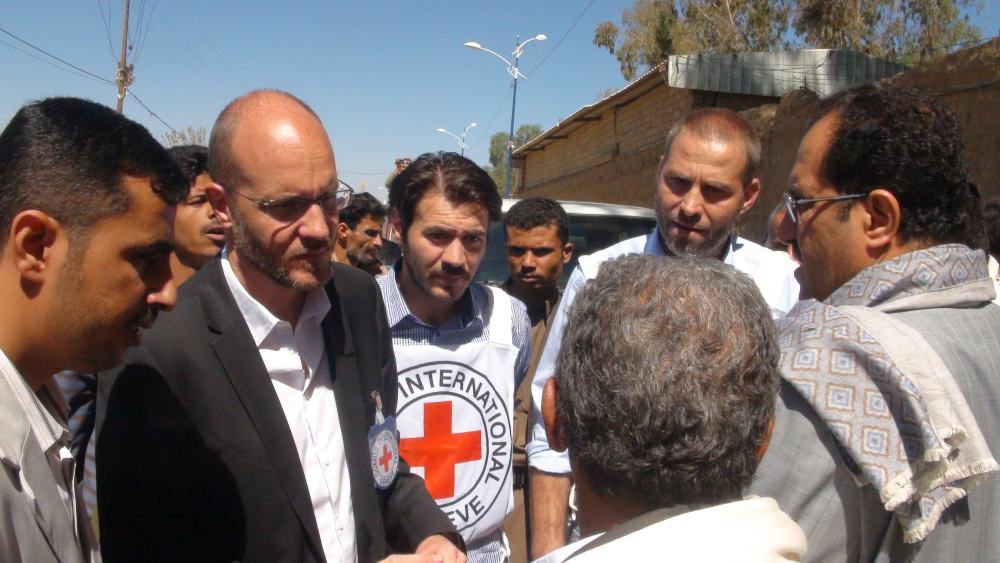
Saada. ICRC evacuates 44 severely wounded people from Dammaj. The Head of ICRC delegation in Yemen is speaking with an old Moroccan man who wants the ICRC to evacuate his daughter and grandchildren stuck because of the fighting in Dammaj. 08/11/2013. ©ICRC/S.N., V-P-YE-E-01023
Thanks to the pauses arranged in the fighting, the ICRC and the Yemen Red Crescent Society continued evacuating the wounded. In 2016, the ICRC and the Yemen Red Crescent Society signed a cooperation agreement on their joint operations. The ICRC also donated ambulances to the National Society.
Over the past eight years, the logistic base in Oman and the office in Djibouti contributed to the ICRC’s efforts in Yemen. Throughout these years, the ICRC continued its support to prisons, including material assistance – hygiene items, cleaning campaigns, repairs on the water system, generators and kitchen, etc.
| Year | Beneficiaries of food commodities | Beneficiaries of household items | Beneficiaries of Wathab projects |
| 2014 | 51078 | 50304 | 1141227 |
| 2015 | 178725 | 109774 | 2543867 |
| 2016 | 274108 | 120960 | 3388943 |
| 2017 | 420653 | 204149 | 4404771 |
| 2018 | 732470 | 212130 | 5109070 |
| 2019 | 366751 | 173425 | 5759566 |
| 2020 | 490266 | 359387 | 5013650 |
Source: ICRC Annual reports
Civilians received access to health care thanks to the ICRC’s support. In 2014, 220,000 people received health care in 11 ICRC-supported health centers. In 2015, the ICRC set up a surgical unit carrying over 160 surgeries. In 2017, ICRC-supported health facilities set up treatment units that handled 86,000 suspected cases in response to a cholera outbreak. In 2020, the ICRC reacted to the COVID-19 pandemic by bolstering its support for critical facilities – hospitals, health centers, quarantines sites, isolation facilities, and prisons – and built a center providing free treatment to COVID-19 patients in Aden.
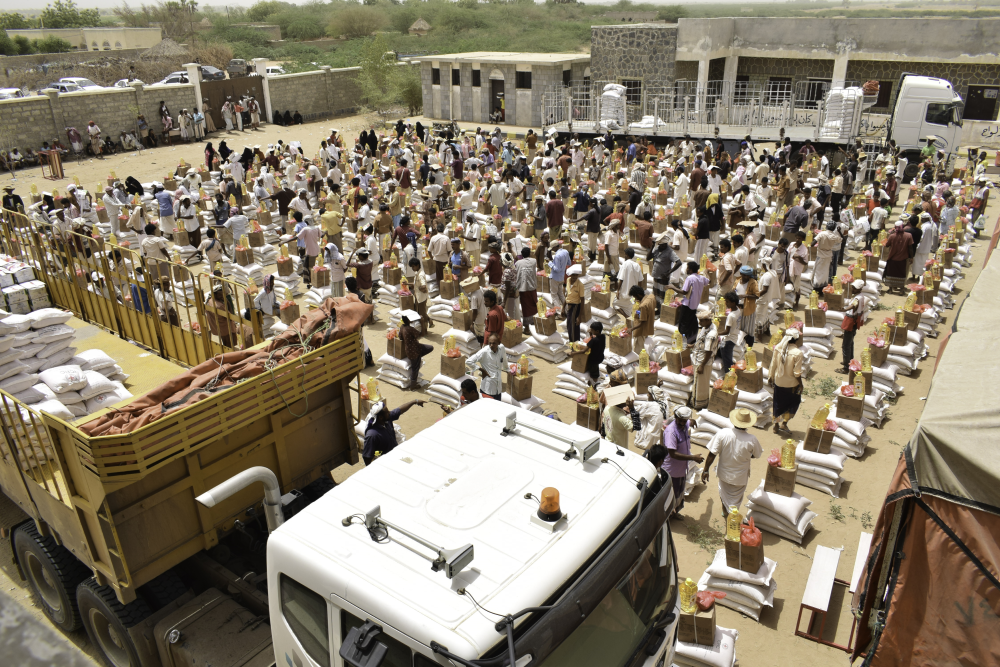
Hodeida governorate, Az Zuhrah district, Noman sub-district, school. ICRC, together with Yemen Red Crescent Society, organises a food distribution for 2,240 internally displaced families from Bani Hassan, in Hajjah governorate. 03/05/2019. ©ICRC/S.N., V-P-YE-E-01909
In 2017, like in previous years, the ICRC provided medical supplies and technical support to health staff in Hodeida and Sanaa central prisons, including training in managing disease outbreaks. In 2019, the ICRC provided 26,165 detainees with mattresses, hygiene items, and other assistance. In 2014, the ICRC carried out 35 visits to 18 places of detention. Delegates saw 8,630 detainees. In 2020, despite the pandemic, 20,454 detainees in 43 places of detention were seen by delegates across 68 visits.
In 2014, over 100 religious leaders met in Aden and Sanaa to discuss the links between Islam and IHL. Meetings, training of military officers, and communication initiatives positively impacted the ICRC’s ability to carry out its operations. In 2015, adapting to difficulties in pursuing face-to-face talks with people affected by the conflict, the ICRC increased its use of digital media. The promotion of IHL was temporarily suspended because of the situation. In 2017, dissemination sessions reached 6,800 people, including authorities, de facto authorities, tribal elders, and community leaders. The ICRC could also resume its dialogue with Islamic circles. That year, the ICRC gave 300 media interviews.
Security issues negatively impacted the ICRC. It is mentioned in the 2014 annual report that access constraints and surges in violence made the ICRC reconsider its planned activities and redirect its efforts.Security threats led to the closure of the Amran sub-delegation that year.
In 2018, the security situation led to the suspension of detention activities for some part of the year. It prevented the ICRC from carrying out some activities, such as addressing cholera, access to health care, and staff training. Detention visits resumed on a broader scale in 2019.
Over the past eight years, the ICRC has acted as a neutral intermediary several times. For example, in 2014, it contributed to exchanging 21 detainees and the mortal remains of a few other people between governmental forces and Al-Hirak. However, the proposed framework for visits of detainees remained at a standstill. Visits to people detained by non-state armed groups were made on an ad hoc basis.
In 2019, the ICRC called upon the parties to revive the implementation of an agreement that the parties had made to release, transfer and repatriate all conflict-related detainees. The ICRC registered and conducted pre-departure interviews with 290 detainees unilaterally released by the Houthis. It assisted in the return to Yemen of 128 detainees in Saudi Arabia, while one detainee was repatriated to Saudi Arabia.
In 2020, the ICRC facilitated the transfer of conflict-related detainees, within the framework of the 2018 Stockholm agreement. On 15 and 16 October, 11 flights from and to five airports in Yemen and Saudi Arabia repatriated more than 1,000 detainees of the Yemeni conflict.
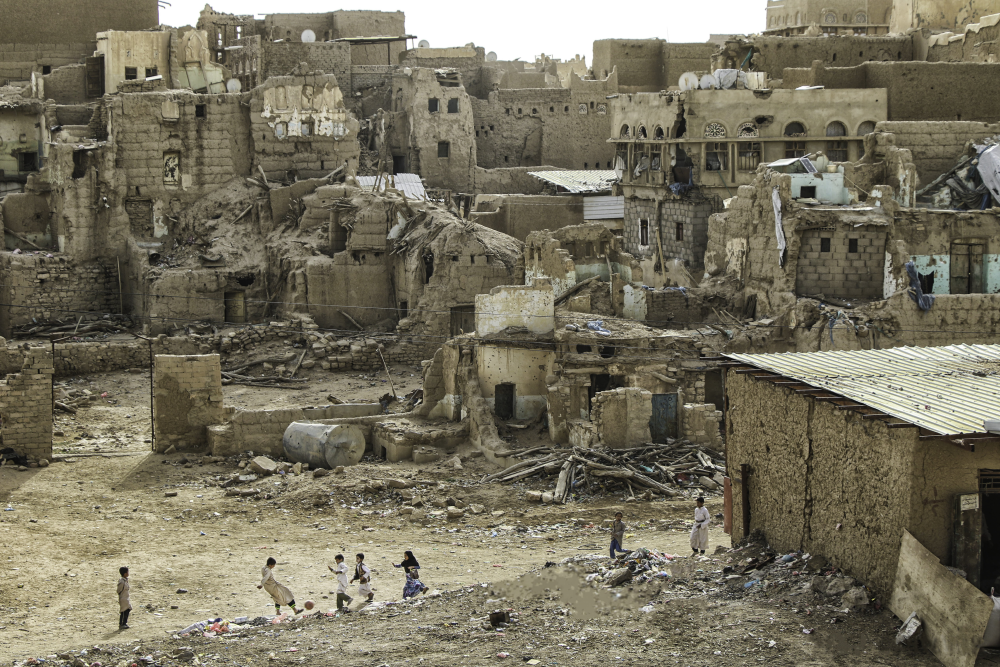
Mud-built houses in the UNESCO-heritage-listed old city of Sa’ada, which were either partially or completely destroyed during the six rounds of civil wars (2004-2010). 03/05/2019. ©ICRC/S.N., V-P-YE-E-01909
Conclusion
Commemorating the anniversary of a long operational presence of the ICRC in a specific country rarely constitutes a celebration. On the contrary, it shows that the country has been affected by war for too long. Generations of people were born and raised in times of persistent uncertainty, violence and suffering.
Violence also directly impacted the ICRC; its action is not without risk. Over the past years, the ICRC paid a huge human tool and faced several tragedies. In 2015, 2 ICRC staff and 8 Yemeni Red Crescent volunteers were killed on duty. In December of that year, two staff were abducted, leading to the transfer of some staff to Djibouti. In 2016, following the release of its abducted staff and renewed security guarantees, the ICRC slowly started to redeploy its mobile staff beyond Sanaa in some areas.
In April 2018, following the killing of one mobile staff in Taiz, the ICRC had to scale back its staff and movements in Yemen, impacting its ability to implement many activities. Most mobile staff were relocated to Djibouti. In December 2020, three ICRC staff died in an explosion at Aden airport, and others were wounded.
This contribution recalls and pays tribute to the suffering of the Yemeni people. The ICRC has been committed to the people affected by the war in Yemen for 60 years and will continue to be so into the future.
منذ العام 1962، تقف اللجنة الدولية للصليب الأحمر جنبا إلى جنب مع اليمنيين خلال أصعب لحظاتهم.
لطالما كان عملنا غير متحيزًا ومدفوعًا باحتياجات الناس فقط.
نشكر الشعب اليمني على استضافتنا على مدى السنوات الستين الماضية. pic.twitter.com/8Ipe8lf2zL— ICRC Yemen (@ICRC_ye) December 28, 2022
Additional resources on Cross-Files
[1] Yemen. ICRC special brochure, January 1995.


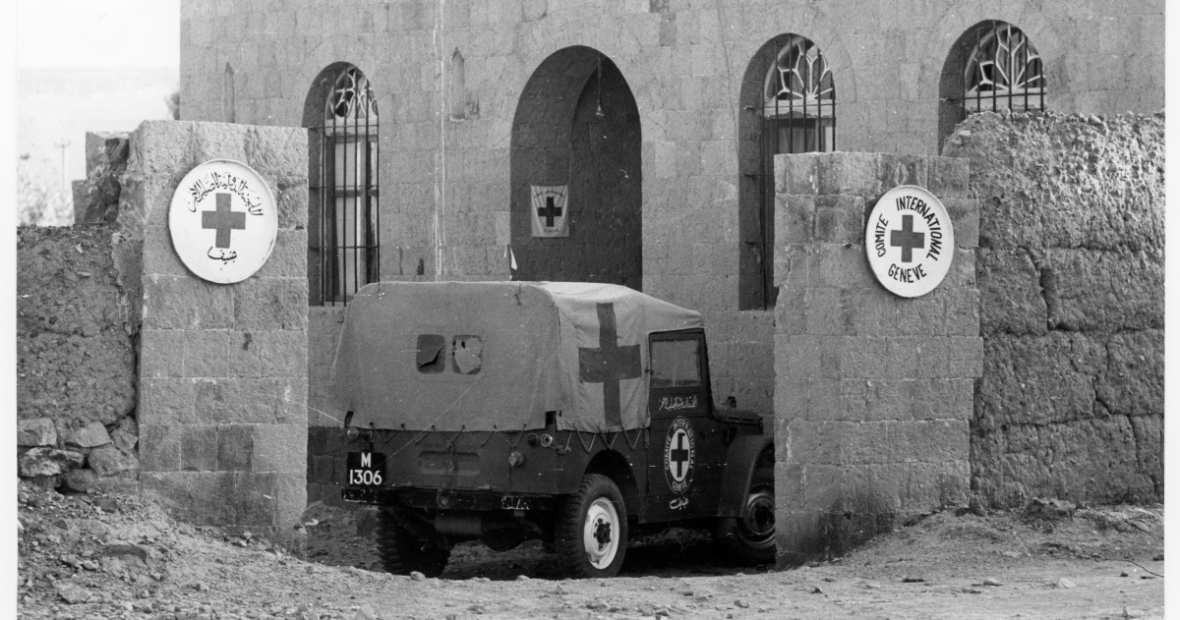

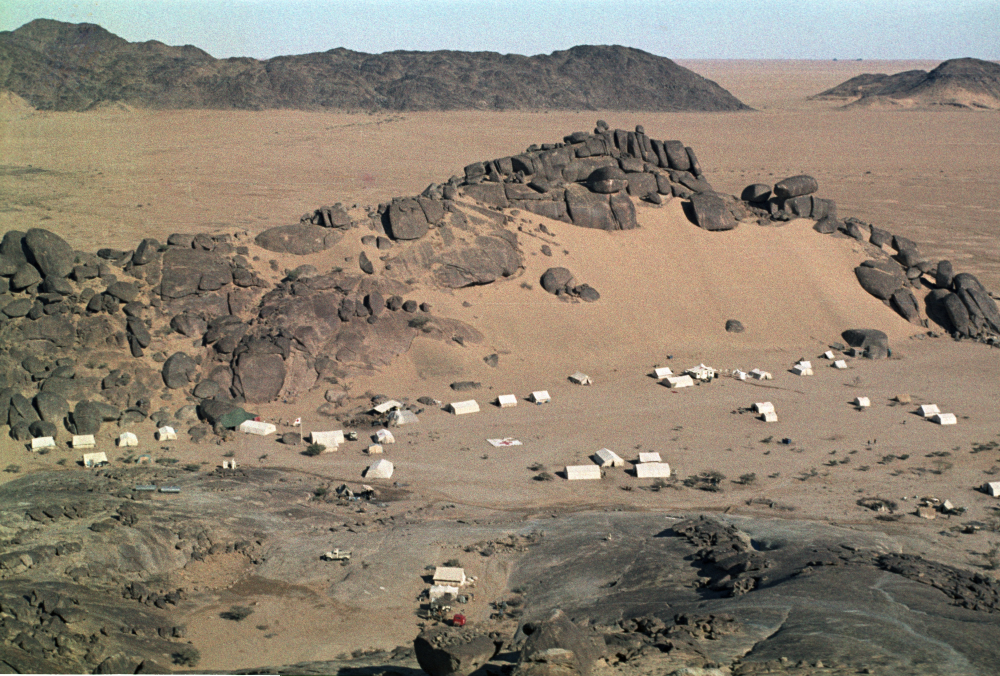
Comments